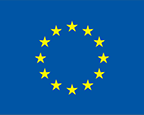Modelling
To explore how climate variability and global climate change affects the routes and mechanisms by which pollutants are delivered to the Arctic, a suite of models have been applied (including multimedia models and single-media atmospheric and oceanic transport models). It is recognized that these processes are poorly understood for some pollutants under current climate conditions. Therefore, effort was devoted both to better understand the transport and fate processes of pollutants under the current climate, as well as attempting to determine how climate change and climate variability influence delivery of pollutants to the Arctic.
Weaknesses of such model simulations, are that it can be questionable if the model has a proper response to a changed climate, because all models have parameterizations of processes that are tuned to the current climate in order to improve the model performance.
Danish Eulerian Hemispheric Model (DEHM)
Using the Danish Eulerian Hemispheric Model (DEHM), the impact of climate change on the environmental fate of the PCB congeners PCB-28, -52, -101 and -180, α- and γ-HCH and mercury in the Arctic was investigated. DEHM is a well-established atmospheric chemistry-transport and multimedia fate model. It was used to simulate the atmospheric transport and deposition of the selected substances in the Arctic area under a ten-year period under present (1990–1999) and future (2090–2099 and 2190–2199) climate scenarios
North Atlantic/Arctic Ocean Sea Ice Model (NAOSIM)
The North Atlantic/Arctic Ocean Sea Ice Model (NAOSIM) was applied to investigate routes and mechanisms of delivery of pollutants to, and cycling inside, the Arctic Ocean. Detailed validation studies have been performed with 129Iodine (released from nuclear reprocessing facilities) in the Arctic Ocean by comparing model results with data from submarine cruises performed in the 1990s. Simulations have also been done for PFOA.

Multi-compartment chemistry model (MPI-MCTM)
A multi-compartment chemistry model, MPI-MCTM, was applied to simulate the global fate of DDT/DDE, four PCB congeners, two HCH isomers, and PFOA. The model runs have been used to simulate the past and present-day cycling of these pollutants and no future climate change scenarios have been performed.
BETR Research
BETR-Research is an update of the BETR Global 2.0 model, and two new software packages have become publicly available. The BETR research model was applied to analyse global contaminant mass budgets for baseline and future climate scenarios. The model was applied to simulate the global fate of α- and β-HCH. Physical-chemical properties were carefully selected and dynamic emission inventories developed for the period 1950 to 2010. Model simulations were run for this period and predicted concentrations compared with available measurements. The model was able to predict concentrations within a factor of two to three for air and ocean, and trends could also be shown by the model. BETR-Research was also used for modelling concentrations of PCBs in the Arctic atmosphere and ocean.
POPCYCLING-Baltic
The regional multimedia chemical fate model POPCYCLING-Baltic was used to estimates the climate change-induced effects on the environmental concentrations of POPs in the Baltic Sea region. The focus was on ‘perfectly persistent’ chemical contaminants that are not degraded in the environment. These substances represent the entire plausible range for non-ionizing organic substances.
The state-of-the-art contaminant fate modelling tool for the Baltic region, POPCYCLING-Baltic, was identified to be to be overly simplistic to accurately model the effects of climate change on fate and transport of organic contaminants in the Arctic.
Svalbard Marine Food Web Model
A steady-state fugacity-based marine food web bioaccumulation model (the Svalbard Marine Food Web Model), was developed to simulate the bioaccumulation of selected PCB congeners. The model was validated with empiric data generated by ArcRisk.





















